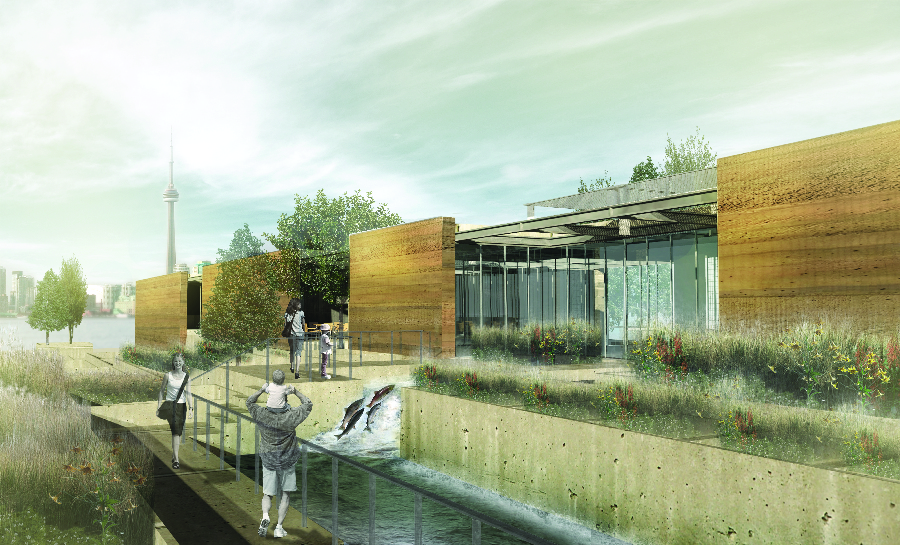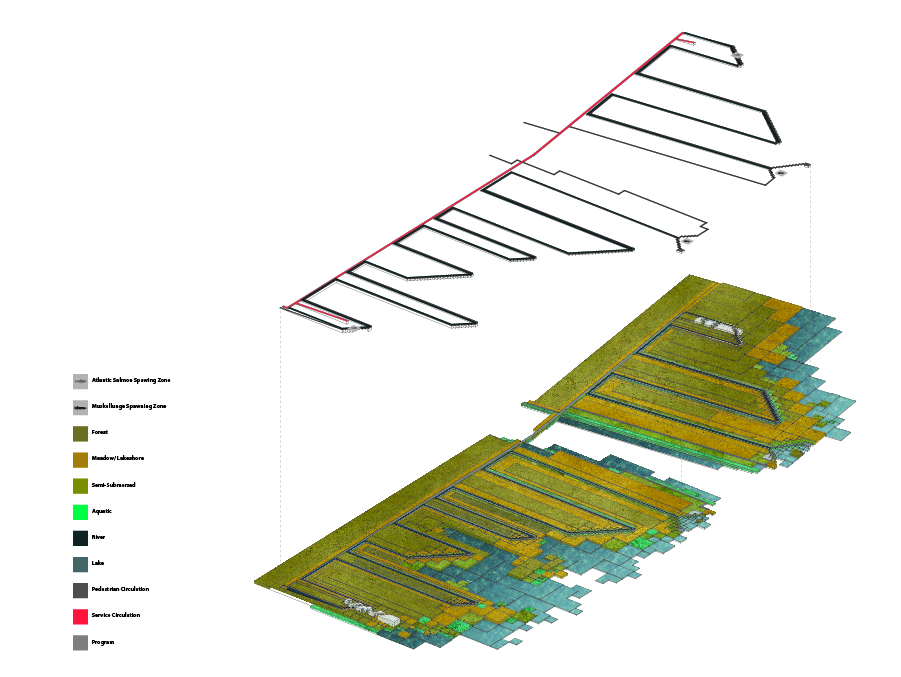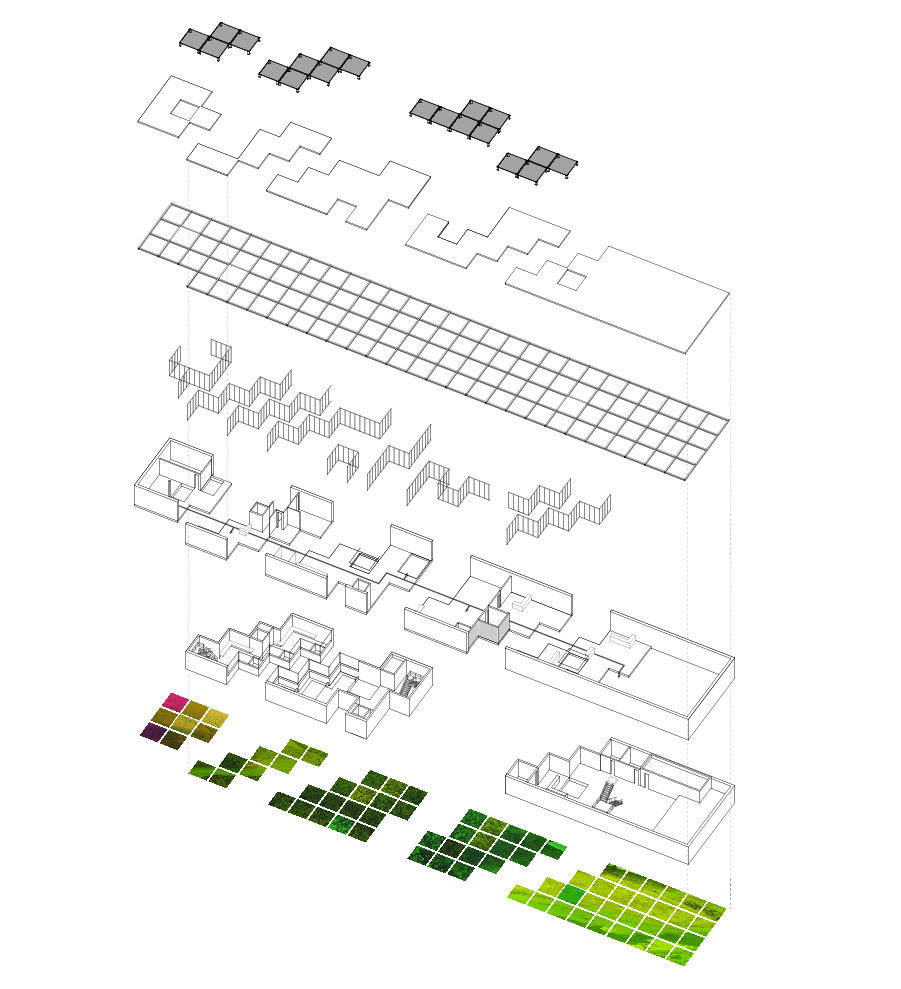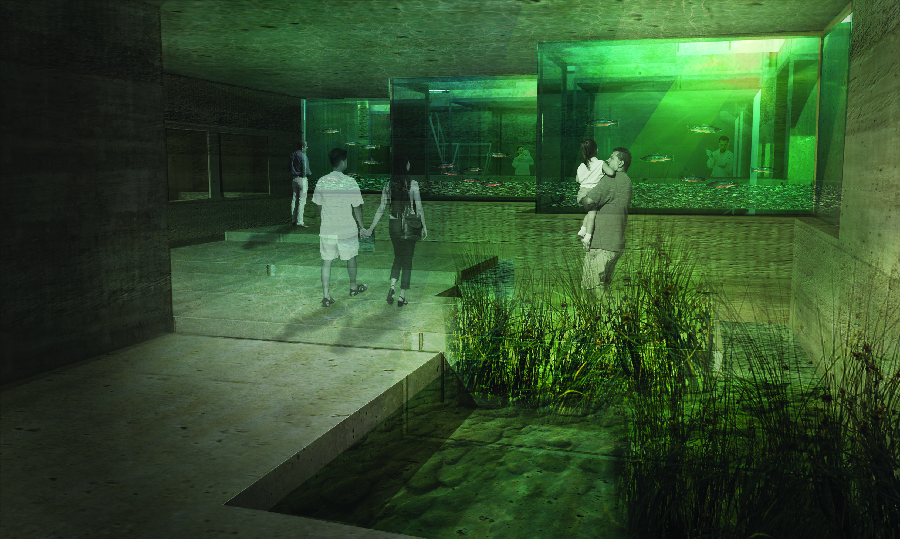Monday and Thursday are studio days. On these days in particular, the third floor undergraduate studio is filled with a frenetic energy of design, research and exploration. Students can usually be found talking excitedly with design professors and classmates in a habitat saturated with trace sketches, study models and empty coffee cups. Every Monday we’ll share a completed project, churned out from this energetic studio environment.
Arch 293 / Lola Sheppard studio coordinator
Species, Spaces Territories
The intention of this studio is to focus on the relationship of building, landscape and environment. The studio seeks to engage discussions that have been ongoing within architecture, landscape architecture, ecology, geography, and in the humanities, as to how we understand and shape our landscapes, and the degree of agency and control which we as species, and designers should or can have within these environments. How do we understand ‘nature’ today?
Nature in a Bell-Jar
We are increasingly fascinated by the remote, yet the most exotic places. The botanic garden has historically served as an intensified registration of humankind’s desire to understand, classify and more recently protect the natural world. It also epitomizes architecture’s perpetual desire, and need, to control its environment. The botanic garden is part museum, part archive, part laboratory, part garden; and in its evolution, it charts culture’s evolving relationship with the nature.
What might it mean for the botanical garden to be more ‘productive’ —whether to cross-breed with other programs: tree nurseries, seed banks, pharmacies, scientific libraries, databases, or partner with agricultural industries, or local food movements? And what if the traditional functions associated with botanic gardens – the research laboratories, the environmental controls, the species breeding—were given legibility to the public? How might perception and operation of the institution change?
This studio argues that this increasing ambiguity opens up opportunities for radically repositioning the role of architecture, technology, landscape and ecology as synthetic and mutually opportunistic partners. What new models of architecture, design, landscape architecture, and environment emerge once our traditional notions of built/natural fall away? What is the relationship between natural and synthetic?
Project by Kate Holbrook-Smith / 2B
Design Statement
What we call the Toronto shoreline today is in fact the accumulation of multiple expansions to allow for more industrial land on the edge of Lake Ontario. This constant expansion has reduced the Toronto shoreline to a sterile state; any healthy ecosystems that once thrived struggle or have ceased to exist.
Dissolving Boundaries proposes a system to regain habitat and allow for new ecosystems to emerge along the Toronto shoreline. These ecosystems are primarily focused on creating the necessary spawning habitat for two native Lake Ontario fish, the Muskellunge and the Atlantic salmon.

The building and landscape strategy does not attempt to transform the Portland site back to its natural condition; rather it aims to reform the existing site into a new architectural form which functions with the same effectiveness as a natural ecosystem. Building and landscape work with the same principle of a dissolving ecotone, each pixel on its own is not significant it is the interactions between these pixels that are essential to the success of the Botanical Garden.







